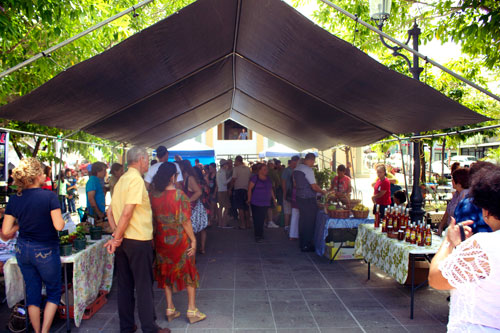Puerto Rican pilot study
Add Summary

Blogger: Marielle Peschiera: Master's student
I am part of the first cohorts of graduate students participating in the MSU and University of Puerto Rico partnership. MSU in coordination with UPR fund Puerto Rican graduate students to take classes at MSU and conduct research in Puerto Rico on issues relevant to environmental assessment and management of the Island’s resources. Here at Michigan State University, I am part of the Center for System Integration and Sustainability in the Department of Fisheries and Wildlife.
My research involves understanding human influences on water quality in two municipalities in western Puerto Rico. For my research I am assessing how “place attachment” influences people’s willingness to change behaviors that may have negative impacts on water quality, and how such changes could lead to improvements in water quality characteristics within the Rio Grande de Añasco Watershed. This work also includes collaboration with the U.S. Geological Survey. With this research I hope to provide insight on creating outreach plans that are more relevant to the needs, values, and perceptions of farmers in Puerto Rico and in this way decrease human impacts to rivers and streams of the island.
August 14, 2013
Here I am, back in Puerto Rico. This time with a mission to conduct surveys for my master’s degree research. I’m going to use the information I gather to better understand what motivate farmers to participate in conservation practices that reduce affects on the quality of nearby water. Understanding farmers’ interests, values and perceptions will help outreach programs more successfully motivate them to engage in conservation practices, with the goal of improving water quality.
 The last report of Puerto Rico’s water quality done by the EPA and PREQB (Puerto Rico Environmental Quality Board) showed that most rivers in Puerto Rico are impaired (95% of the 84% of rivers and streams assessed are impaired). This means that rivers can’t support primary contact such as drinking and swimming, and don’t meet the optimal physical or chemical conditions needed for aquatic organisms to survive or growth (PREQB 2010). These impairments are mostly due to damaged or non-existent septic tanks in local communities, animal feeding operations, urban runoff, minor industrial point source pollution, agriculture practices, sanitary sewer overflows, landfills, and municipal point sources (PREQB 2010).
The last report of Puerto Rico’s water quality done by the EPA and PREQB (Puerto Rico Environmental Quality Board) showed that most rivers in Puerto Rico are impaired (95% of the 84% of rivers and streams assessed are impaired). This means that rivers can’t support primary contact such as drinking and swimming, and don’t meet the optimal physical or chemical conditions needed for aquatic organisms to survive or growth (PREQB 2010). These impairments are mostly due to damaged or non-existent septic tanks in local communities, animal feeding operations, urban runoff, minor industrial point source pollution, agriculture practices, sanitary sewer overflows, landfills, and municipal point sources (PREQB 2010).
To assess farmers’ willingness to participate in conservation practices, I’m using three measurements to see how they influence each other as well as how they influence farmers’ behavioral intentions and behaviors. The measurements used are:
- general connection to nature
- place attachment (physical, social, and nature bonds to the watershed)
- concern about water quality
Before doing the survey, I first need to do a pilot study, where I’ll identify any misleading questions and see if anything needs improvement. Looking for farmers’ organizations and asking for a list of farmers was a harder task than I expected. Since I only had few weeks to do the pilot study, I decided not to wait for the people to contact me back and went directly to a farmers’ market at Rincon, Puerto Rico. With my questionnaire in hand, I left early in the morning so I arrived by 9 a.m. Rincón is on the western side of the island, known for its beautiful beaches and great surfing spots.
When I arrived to Rincon, the small size of the farmers’ market had me worried, but their willingness to participate in the study put me at ease. I asked several famers to complete my su



 Print
Print Email
Email









